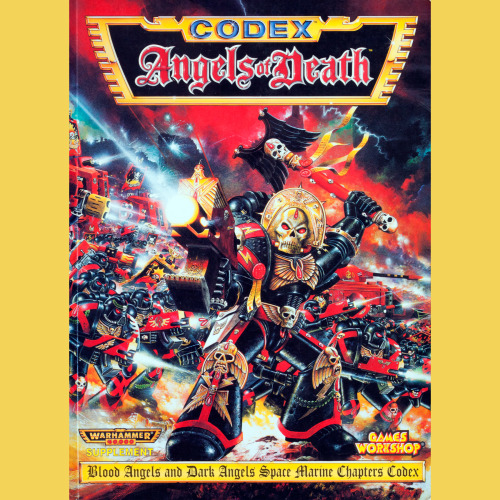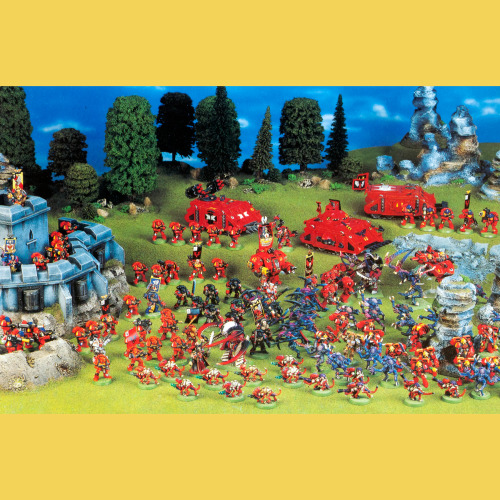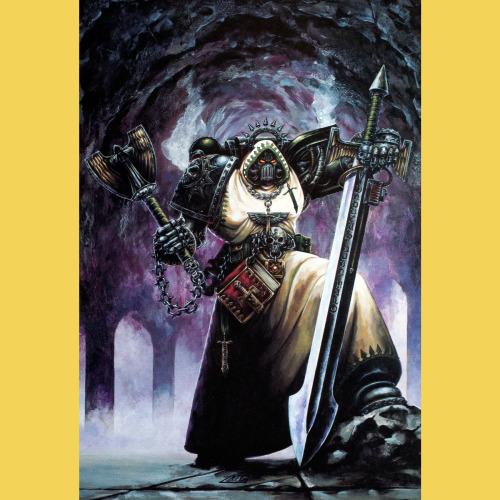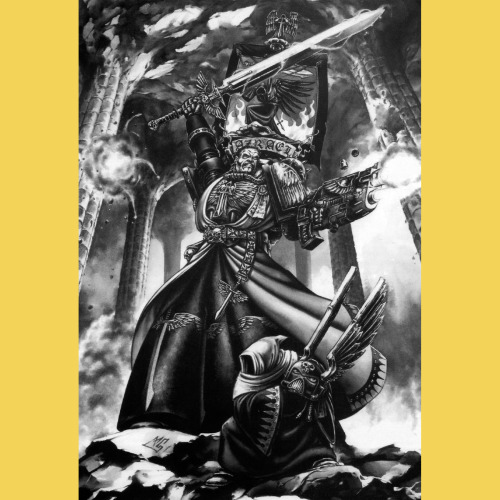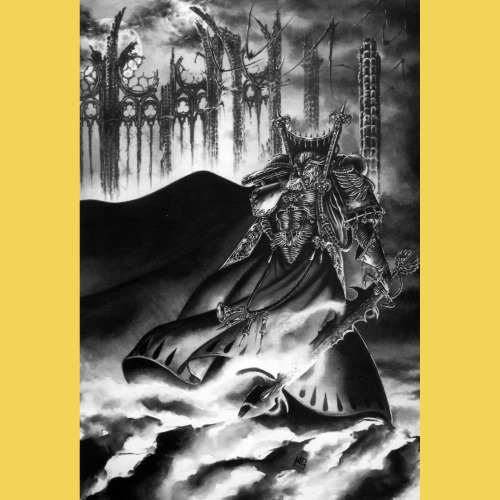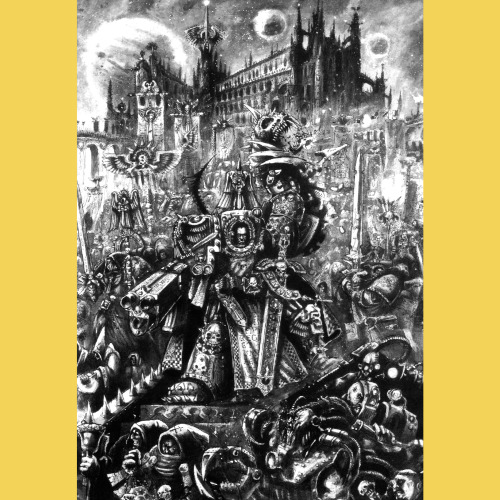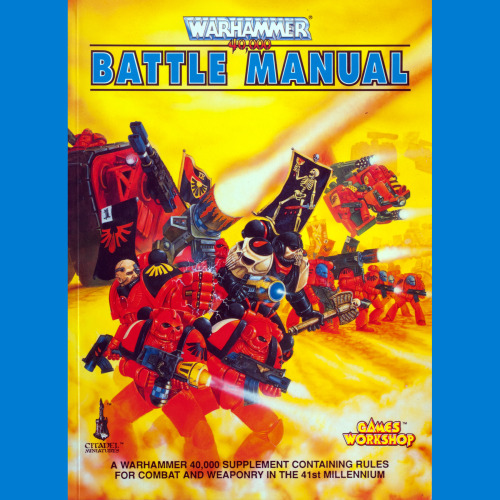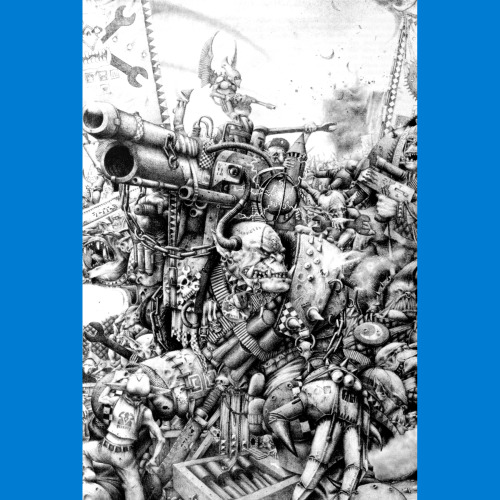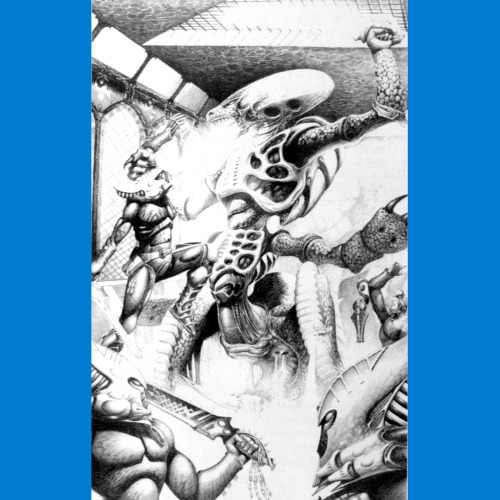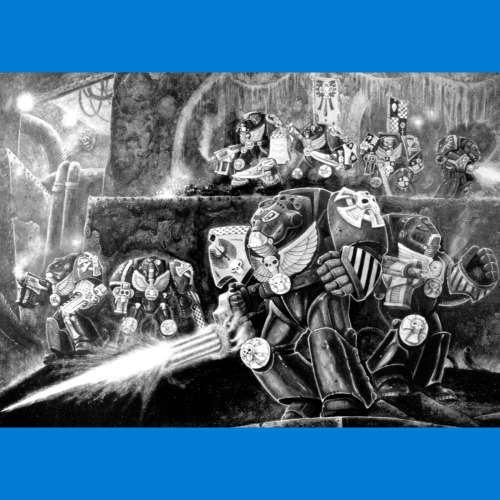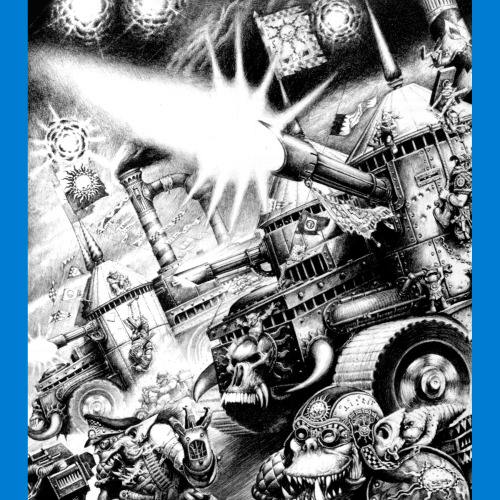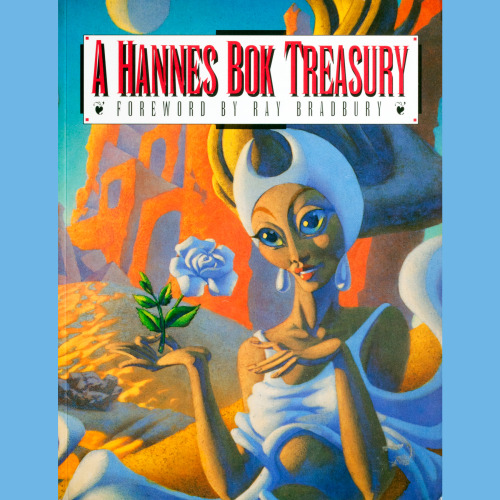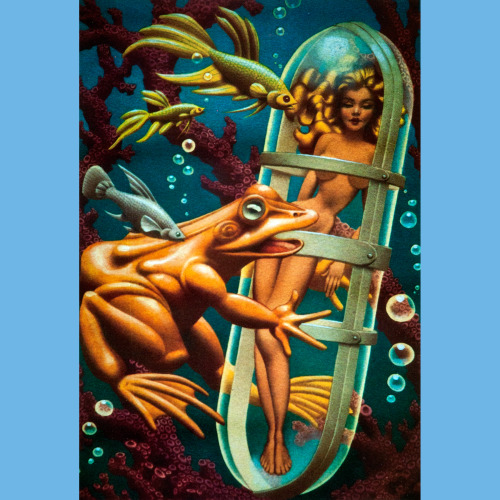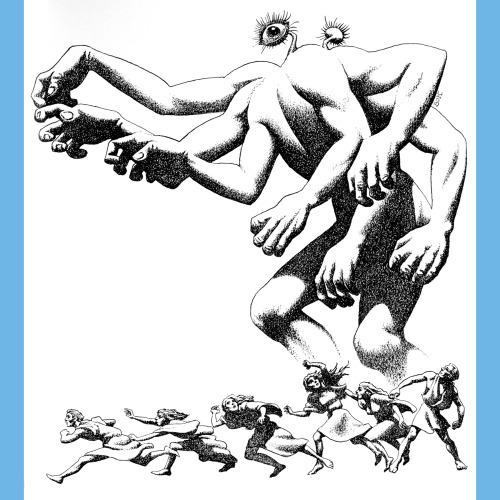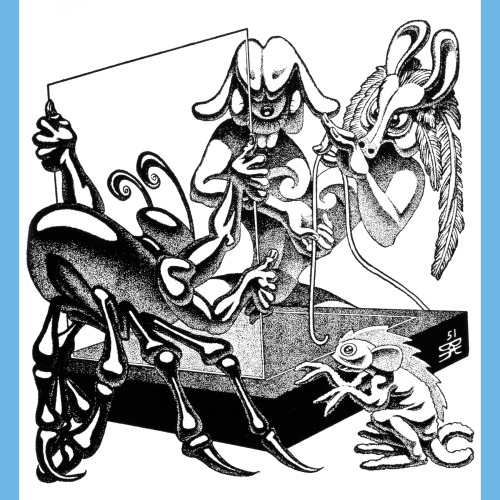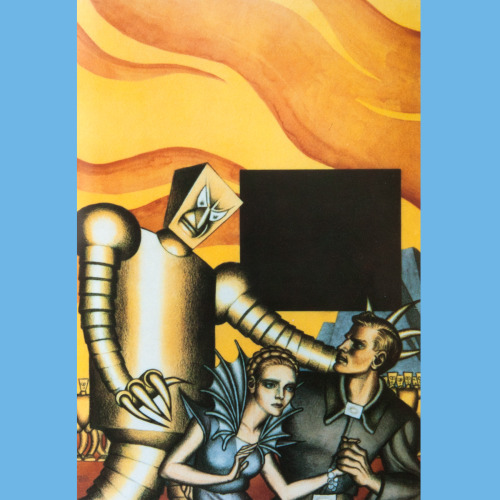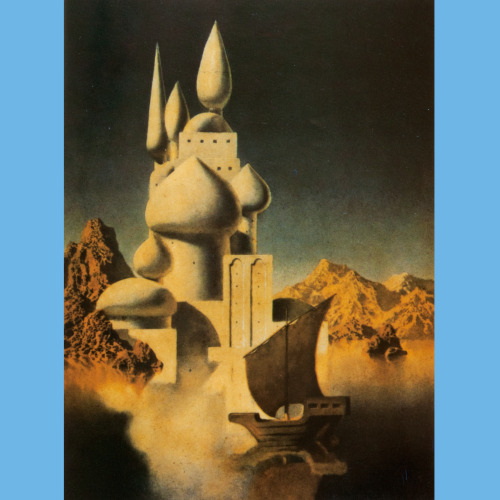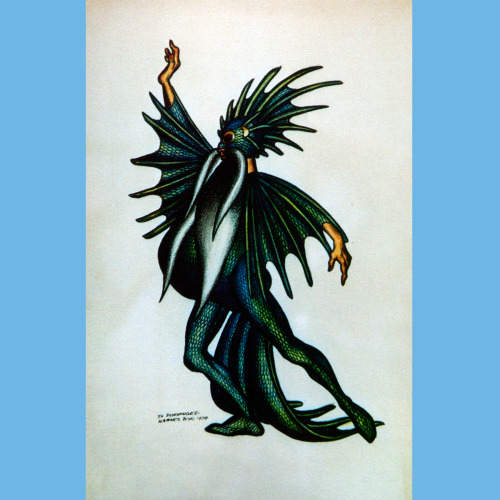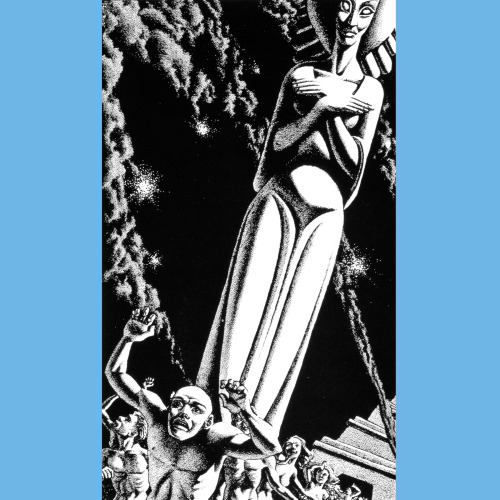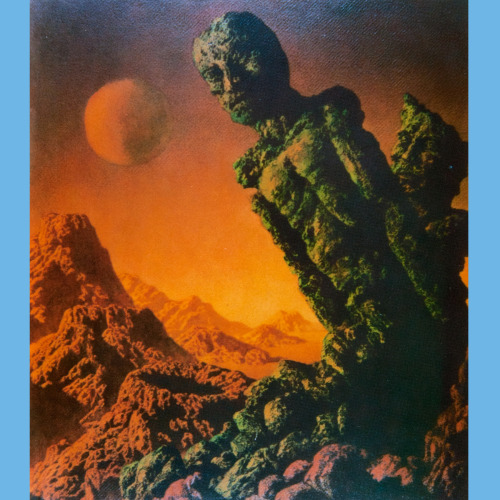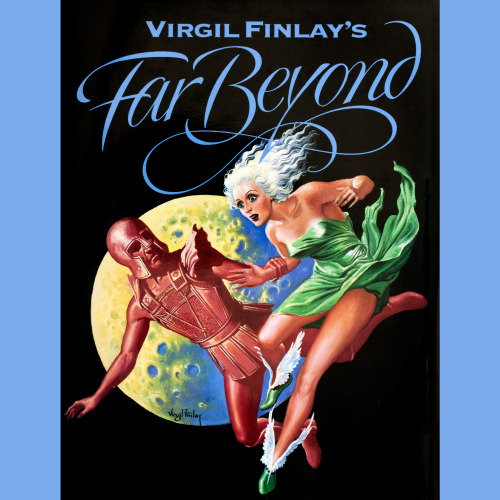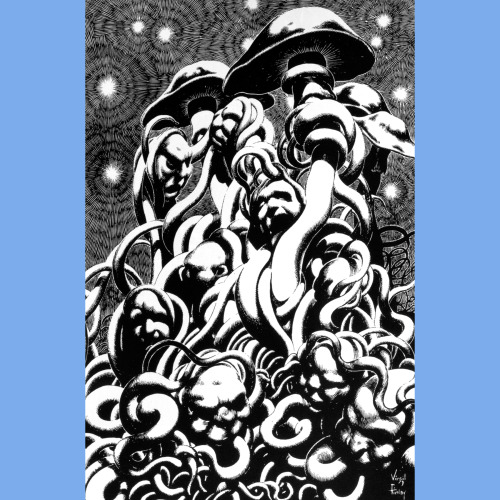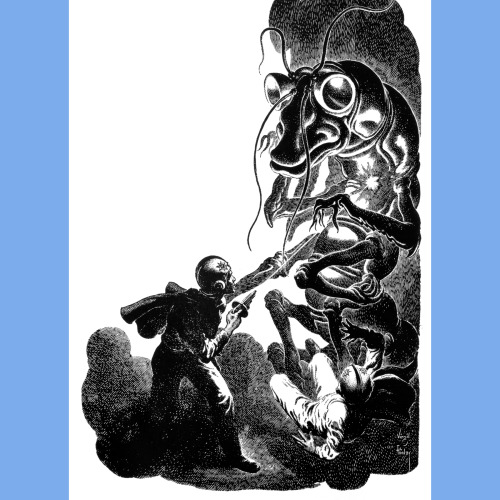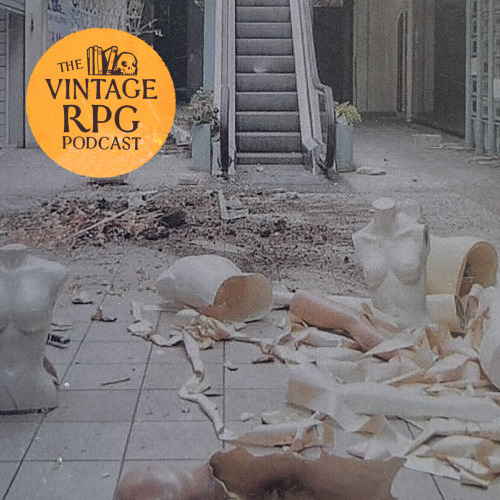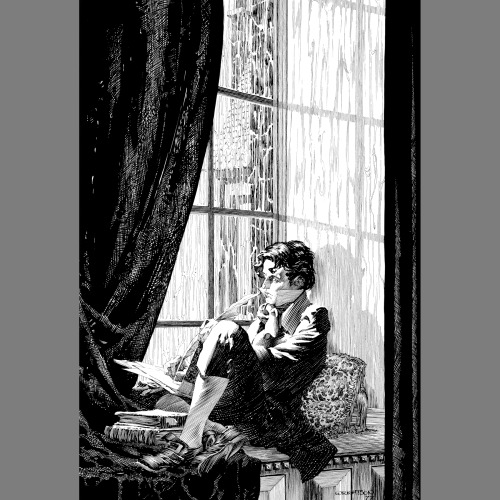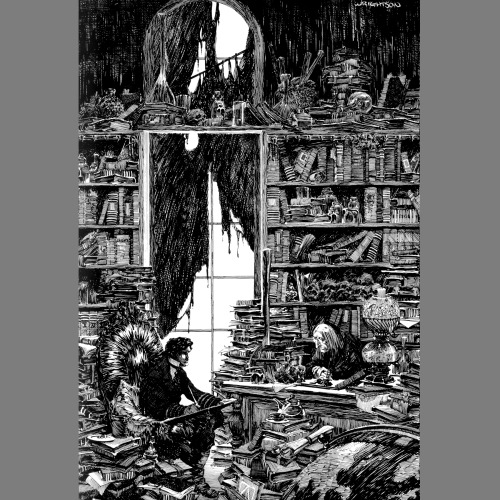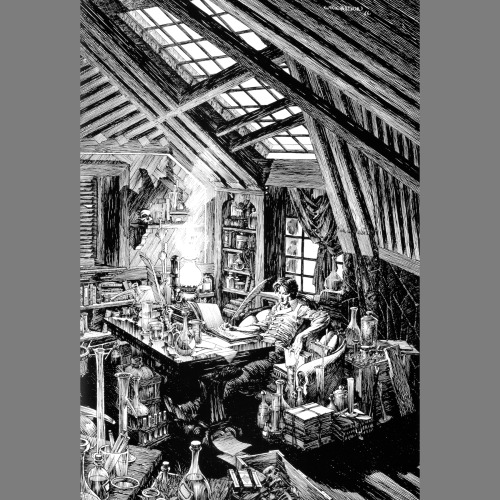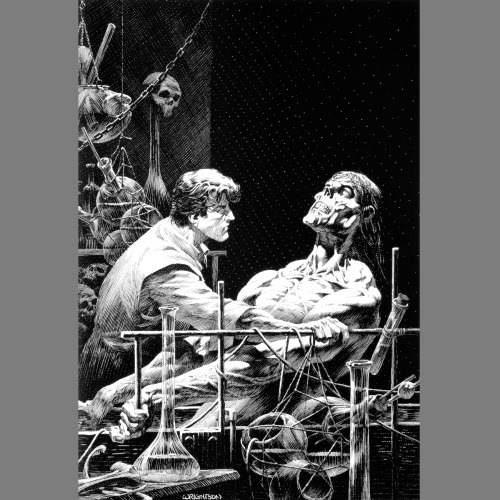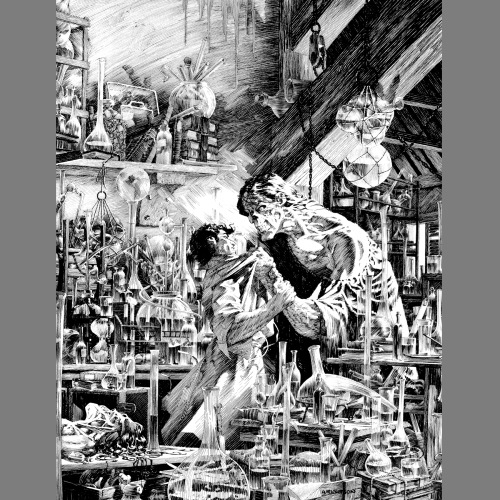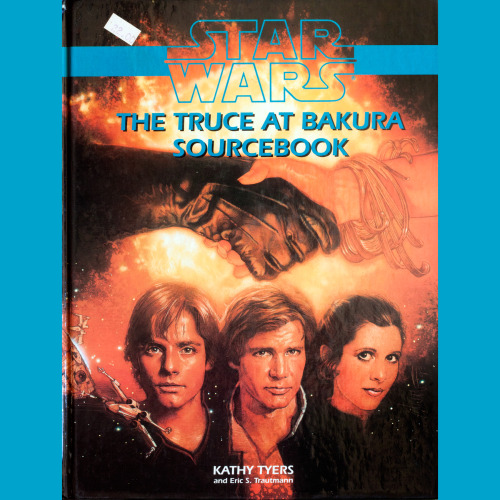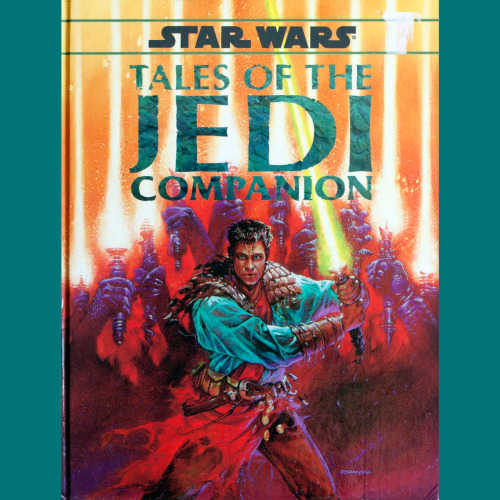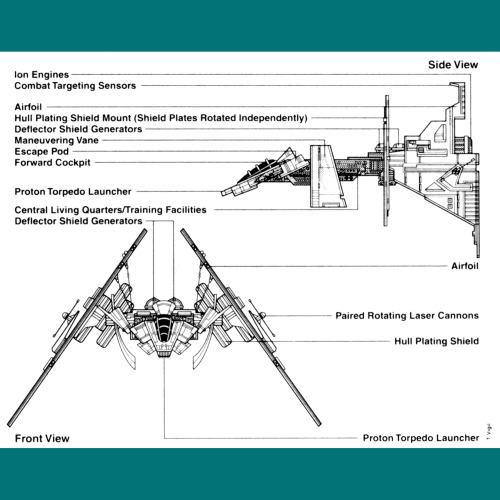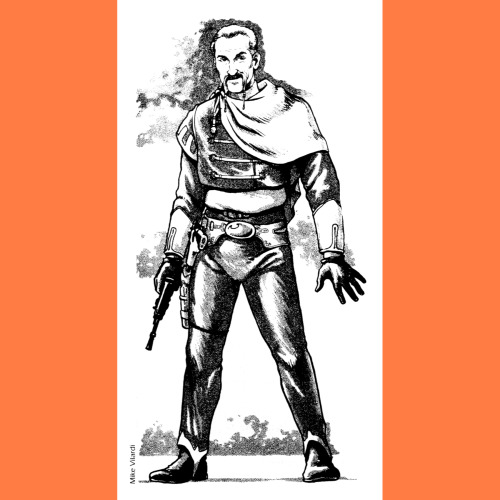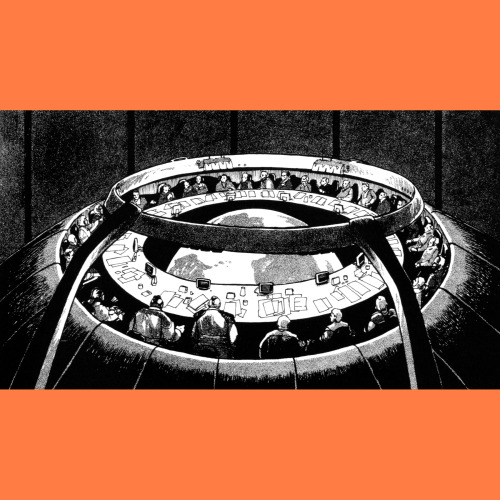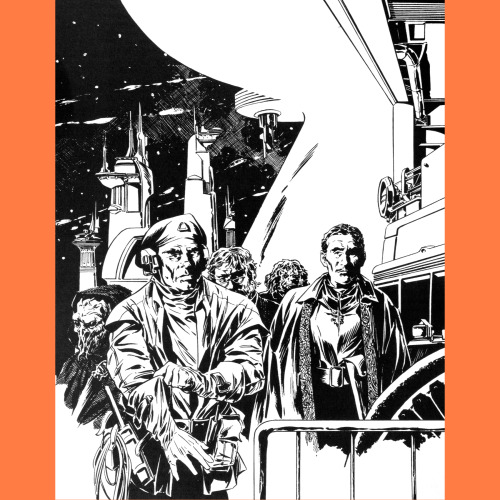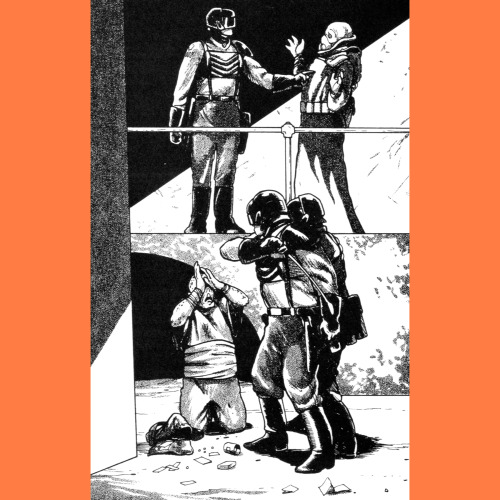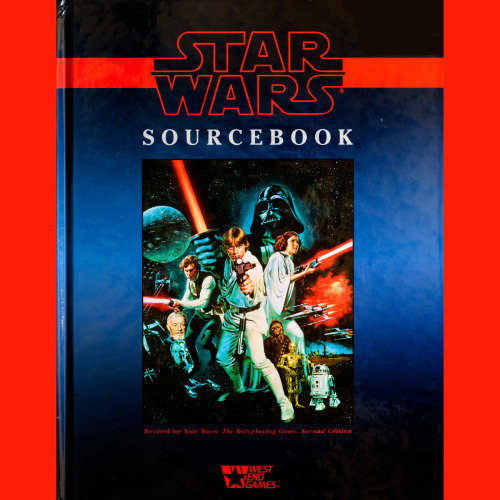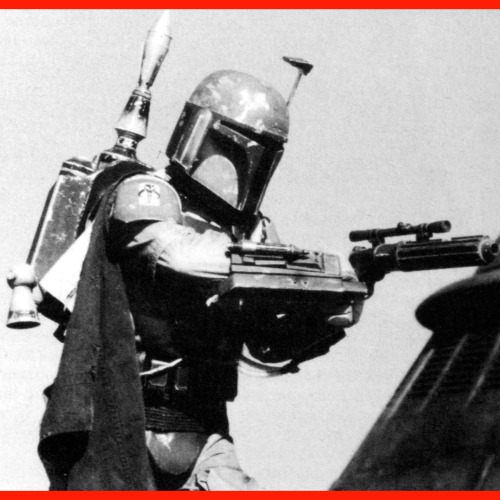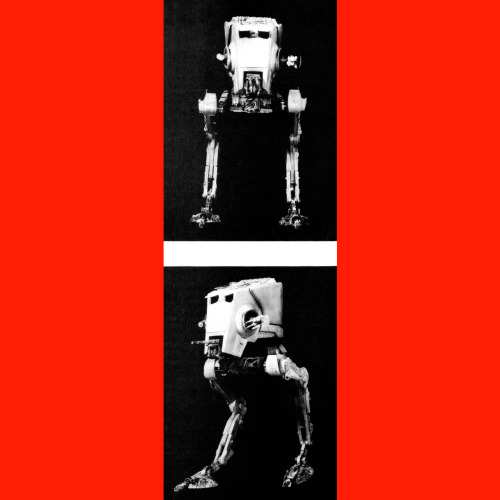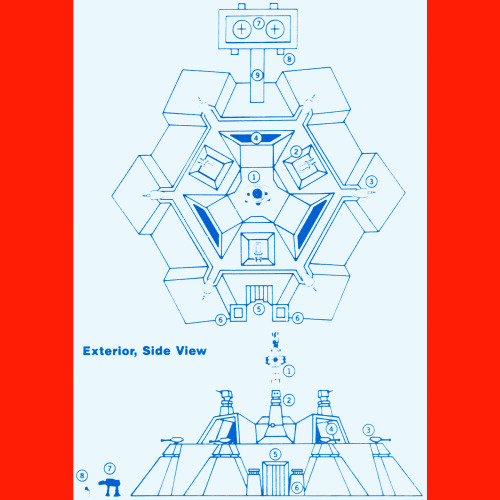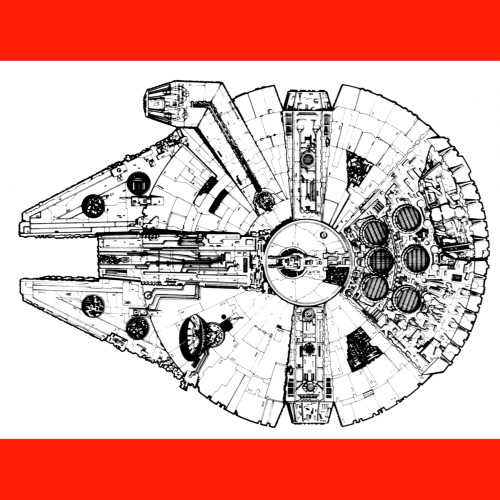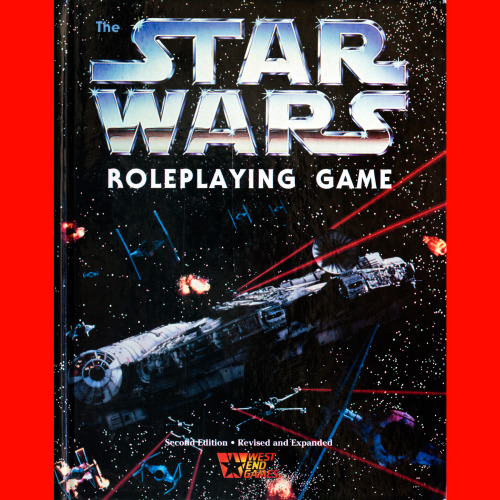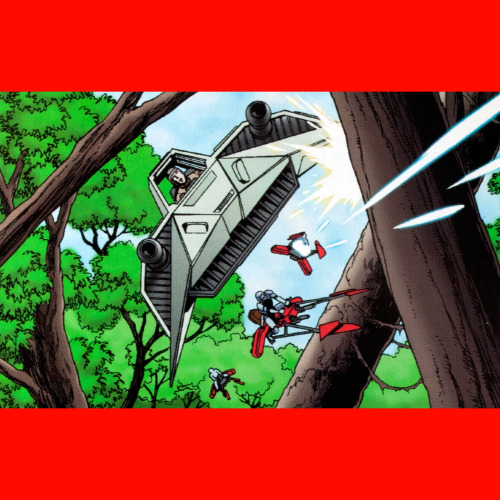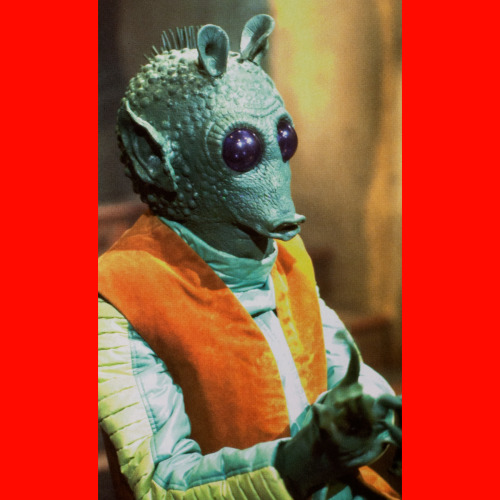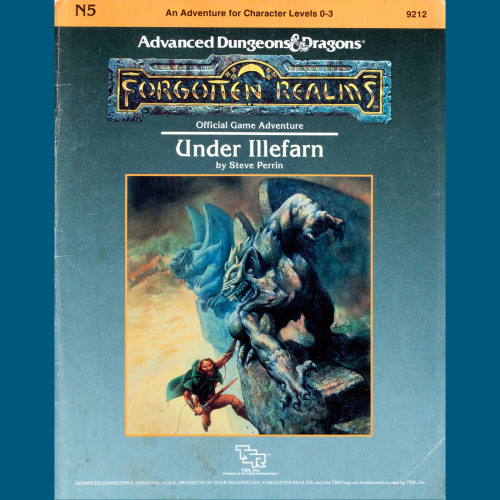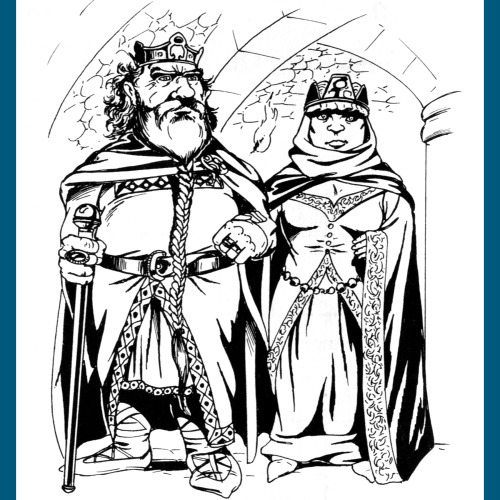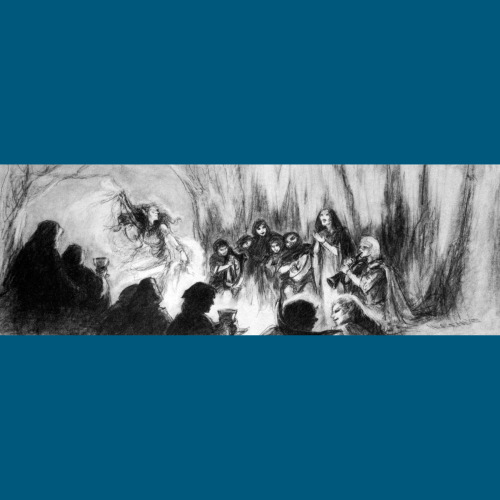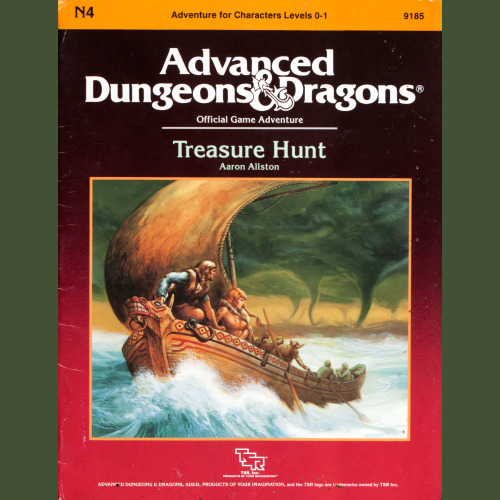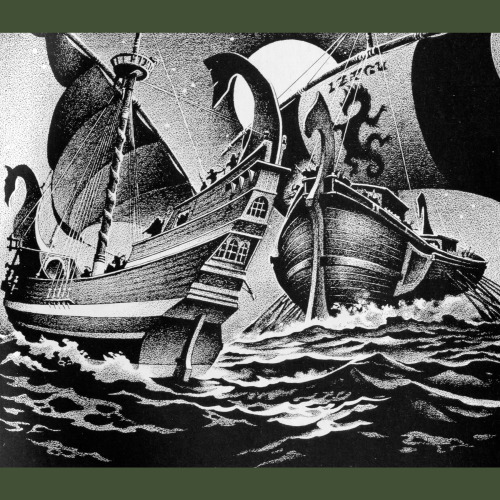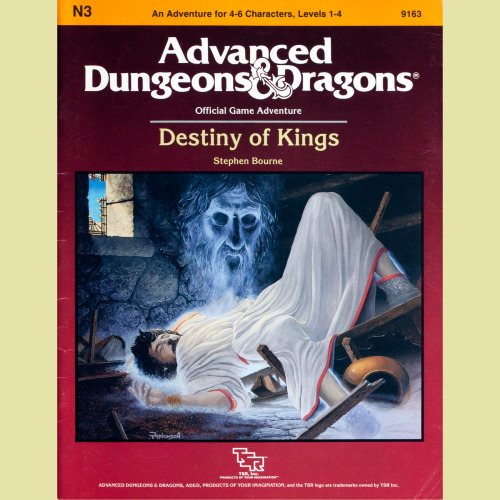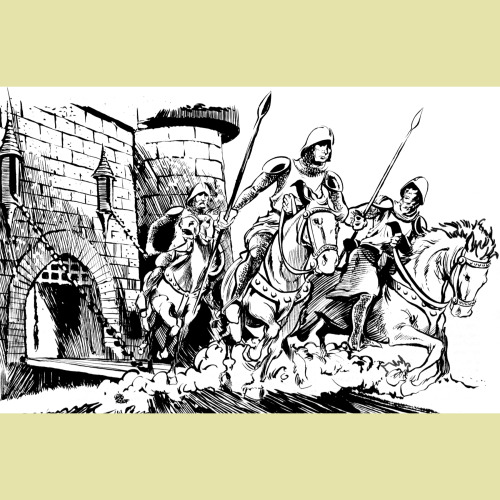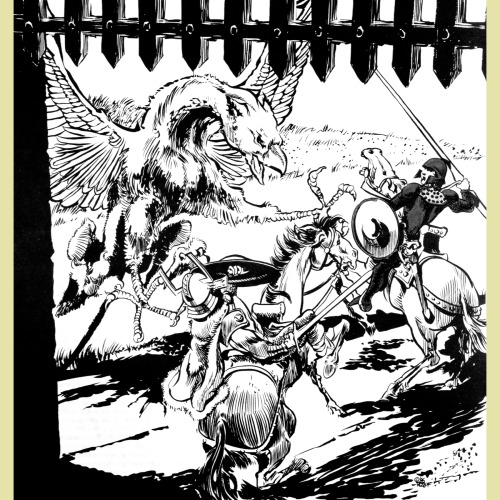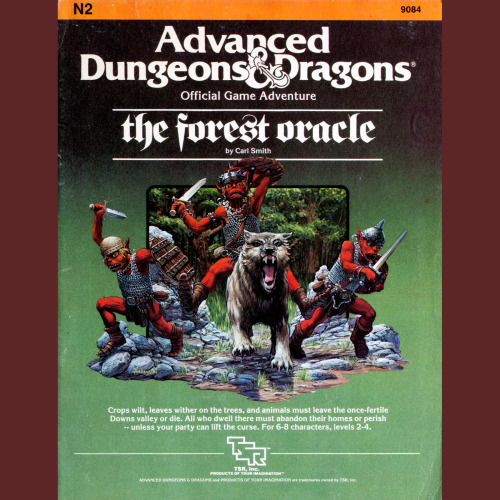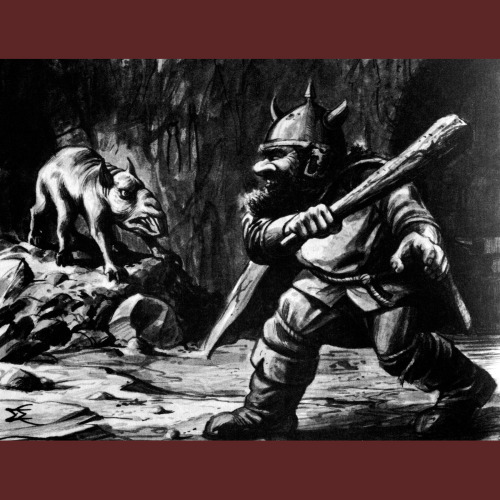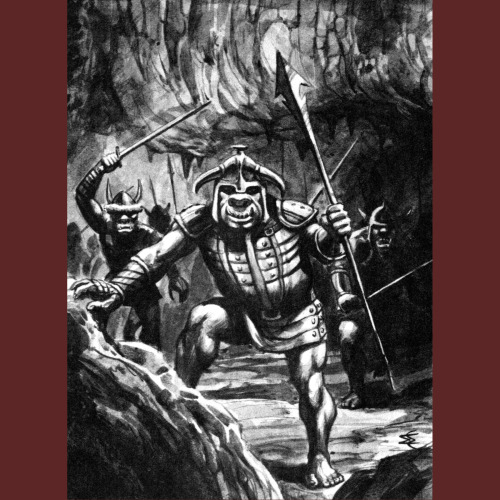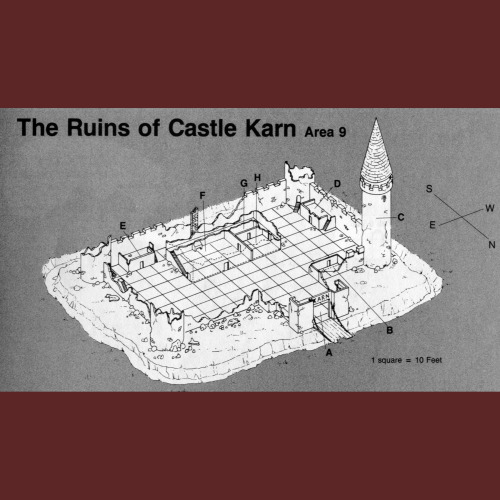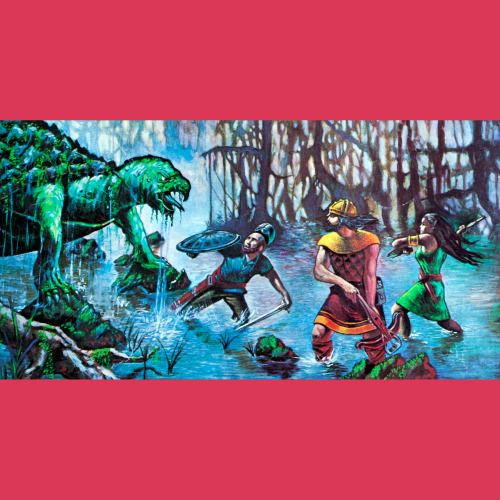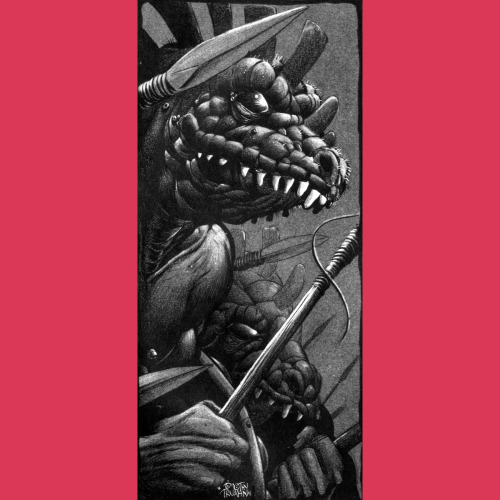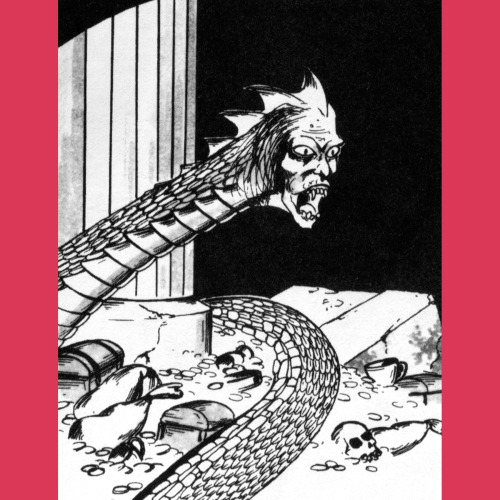#roleplaying game
Dragon 42 (October, 1980). Spooky Halloween cover by Steve Oliff. A favorite of the early era covers for me.
Post link
My interest in Warhammer 40k rapidly deteriorates once the second edition of the rules comes out. For me, this is the point the game starts taking itself too seriously and the endless rat holes of lore dig too deep. The bold color choices start to fade. It all gets, well, grimdark. It always was, of course, but I dunno, tone is funny, fickle thing. It doesn’t surprise me that the bombastic silliness and the pointed satire started to take the back seat — when endless war is the constant focus, your players are going to eventually take on a warrior mindset.
There are still bastions of stupidity though, like Codex: Angels of Death. Well, not all of it — a lot of this book is pretty fashy, honestly. But the Death Company Chaplain? That guy is a treasure. He’s trying so hard to be cool! He’s got so many skulls! He demands you take him seriously! But I don’t! He’s such a ding-dong.
Post link
Warhammer 40,000 Battle Manual (1992) is an expansion of the Rogue Trader rules, focusing on troops. The Vehicle Manual came out at the same time and provided revised rules for, you guessed it, vehicles. That book is less visually exciting though, and that’s what I’m here for, so Battle Manual it is. Tons of space devoted to weaponry, probably the majority of the book.
There are some considerable aesthetic changes going on at this point. You can see that the old style beaked space marine helmets have been replaced by what I like to call the radiator grill style — this is what I think of when I think of 40k space marines. Focus is now split between space marines, orcs and the Alien-esque Tyranids. This surprises me, since both Realm of Chaos books were out a while at this point. I guess the taint of Chaos is slower to spread than I thought.
Post link
Hannes Bok is another tremendous fantasy illustrator, primarily from the pulp era, who is largely overlooked by modern audiences. Moreso than Virgil Finlay, even. He’s primarily remembered for his gorgeously strange cover illustration of John W. Campbell’s collection Who Goes There? (depicting the shape-changing Thing). He was also a writer — his books published under the Ballantine Adult Fantasy imprint are fairly well known.
This is A Hannes Bok Treasury (1993). As art collections go, it isn’t the greatest, but it is really the only one of Bok’s work I have ever seen. It lacks a lot of his notable work (the most famous image here is the lion-like ghoul illustration for Lovecraft’s “Pickman’s Model”). I usually talk about how the color reproduction in these Underwood/Miller collections is sub-par, and that might be true, but having had the pleasure now of seeing some of Bok’s paintings in person, I can say there is a hard to read quality to them, a murky, slightly out of focus quality. It is strange. It might be his varnish oxidizing.
Bok feels a bit outside the norm for fantasy art. Finlay I would characterize as having a conservative atomic age quality, firmly pulp. Bok often harkens to the fine art of the day, particularly Surrealism, but also other movements like Abstract Expressionism. There is often a sculptural, geometric quality to his figures and landscapes. I would also hazard a guess that dance and other performing arts were a big influence. His figures almost always appear to be in motion, flinging themselves around, often in crowds, reminiscent of a corps of dancers on stage. His palettes are unusual and many of his paintings embrace odd textures. His oils are often cracked, though I have no idea if this was by design or accident.
My favorite stuff, I think, are his landscapes. They’re sort of effortlessly alien. You get the sense you’re looking through a window at a place where the air is genuinely different.
Post link
Let’s backtrack from Wrightson to an early titan of fantasy art, Virgil Finlay. It is my general opinion that Finlay does not get enough love or credit. To my knowledge, Far Beyond (1994) and a second collection from Underwood/Miller (Strange Science, 1992) are the most recent collections of his work. That’s a travesty, man.
Finlay is the king of the pulp era. His clean line work, occasional stippling and graphic sense is really the bedrock of fantasy art from the late 30s through the 50s. His approach to science fiction just reverberates through people’s brains, man — his rocket ships, his robots. It’s all very atomic age in its vibe, and glorious. His horrors are suitably awful, too, a dab hand at a grotesque face. He seems to delight in using graphic elements to create unsettling or hypnotic effect in the viewer — he’s one of the earliest and most effective artists to attempt to illustrate things like mind control and psychedelic visions. And no matter how strange he gets, his line work is relentlessly legible. There is no difficulty reading his work; the imagery is clear though the meaning is often obscure.
More Finlay, please. The Underwood/Miller books are fine for black and white reproduction, and that is probably what Finlay is best known for, but the color reproduction is lackluster. Considering the long shadow of his influence (which is self-evident, looking at his work) a definitive collection of Virgil Finlay’s art is long overdue.
Post link
It’s just an abandoned mall, what’s the worst that could happen? This week on the Vintage RPG Podcast, we do some urban exploration and investigate Dead Mall, a neat Tunnel Goons hack about the ruined temples of capitalism. We also discuss Nate Treme’s Tunnel Goons and Satanic Panic at Crowley Place Mall, a zine scenario for Dead Mall.
Post link
A while back I posted about the 90s Bernie Wrightson retrospective A Look Back and said that it was the only way from me to see anything from his Frankenstein illustrations when I was a kid. And then I was like, thank god it is back in print and y’all were like, Dude, the Dark Horse Frankenstein (2008) is totally out of print and goes for top dollar (you all said it just like that, with the date in the parentheses and everything). And then we all cursed god together.
Well, friends, I figured I would share the Dark Horse edition of Frankenstein with you, since it is so hard to come by. But I come bearing good news: in 2020, Gallery Books brought it back in print for not a small fortune. The bad news is that it is digest size, so Wrightson’s art is shrunk. This is sort of a travesty, but I was psyched to get some of these plates on trading cards back in the day, so while not the ideal presentation, something is generally better than nothing. Centipede Press keeps threatening to re-issue it, and if they do, you know it will be good, even if it is a kick in the wallet.
And I mean, jeeze, just look at these. Wrightson’s control over light is shocking to me, as is his use of negative space. The plates are so rich and deep, even the heavily white compositions like that snowy cemetery. Look at those regular white dots punctuating the background of that one lab illustration. Or how those swooping lines add both dreaminess and tense movement to the bed illustration. And all the details, endless books and vials and stuff. Maximalism at its finest. A true masterpiece.
Post link
1993 saw Bantam Spectrum publish two Star Wars novels. The first was The Last Command, the third and final part of Timothy Zahn’s Thrawn trilogy, which arguably revitalized Star Wars in the minds of the general public. The second was The Truce at Bakura. This is the start of a precipitous drop in quality in Star Wars novels.
The idea here is that the New Republic is scrambling to take control of the fallen empire and getting star systems to join. They visit Bakura as it is being attacked by an unknown alien threat, which forces the rebels to join forces with the hard-pressed imperial garrison. This sounds like some centrist BS if you ask me. There is no shortage of weirdness. One ruthless imperial officer is allowed to defect after attempting to kill Luke Skywalker and succeeding in destroying a rebel cruiser. Oh, and Darth Vader’s ghost shows up to beg Leia’s forgiveness. You know, that guy who was instrumental in blowing up her home planet. The only thing you can give the book is that the alien invaders, the Ssi-Ruuvi, aren’t nearly as bad as the Yuuzhan Vong. Those guys really suck.
Anyway, it is hard to make a good sourcebook out of a crummy novel. At least West End learned to be choosier after this. I shudder to think what sourcebooks for The Courtship of Princess Leia or The Crystal Star would be like.
Post link
When they announced that the follow up to the Dark Empire comic series was going to be a series about Jedi centuries before the original Star Wars movies, I was pretty uninterested. If I recall correctly, it was only my pal Ed’s glowing reviews that got me to finally check it out. I honestly still winge with reflexive disinterest a bit when I think about it, but the Tales of the Jedi comic is no doubt one of the best bits of 90s Star Wars, certainly in comics but even in general. Like Dark Empire, it is a fever dream of Star Wars, but one that actually feels correct in some fundamental way. Freedon Nadd! Exar Kun! Holocrons! Lightsabers with wires connected to little power packs! Not to mention paving the way for two excellent videogames.
The Tales of the Jedi Companion (1996) attempts to translate this remote epoch to the Star Wars Roleplaying Game. It draws from just the first two series — Tales of the Jedi and The Freedon Nadd Uprising, a mere seven issues — and everything from the setting to the tech feels pretty accurate to the comics. It is a big undertaking for a single 180-page book though, to set up an entire galaxy. So while I think the content of the comics is well represented, I struggle a bit to see how to play beyond the bounds the comic has clearly laid out. That might be a me thing (I did pass on the comic initially, remember) but I file this sourcebook as more one for folks who want to read about Star Wars than play Star Wars. Maybe I’d feel differently if it took into account all 36 issues. (It also bugs me that I can’t find comic writer Tom Veitch’s name in the credits anywhere).
Post link
From 1979 to 1980, Brian Daley wrote the three Han Solo Adventures novels — Han Solo at Star’s End, Han Solo’s Revenge and Han Solo and the Lost Legacy. I could never get through them, but they, along with the Marvel comic and the non-canon Splinter of the Mind’s Eye, form up the foundation of the expanded universe.
Han Solo and the Corporate Sector (1993) is a sourcebook for the first two novels (the last is set in the Tion Hegemony). The titular Corporate Sector is run by the the tyrannical Corporate Sector Authority, a stand-in for the Empire that sets the stage for exploring Solo’s history as an outlaw and smuggler. Despite having no real opinion on the source material, this is one of my favorite sourcebooks for WEGSW.
The intention is to inject a bit of the Western into Star Wars. There is a gunslinger (Galanadro, who is a pretty cool character, honestly), a jail break, swoop racing, frontier life. It also, inadvertently, introduces a whiff of cyberpunk into the sci fi of star wars, with immoral monolithic corporations and heists and lowlifes. Most of all, it is refreshing because the Corporate Sector Authority (I would abbreviate it, but I can’t help but read CSA as “community-supported agriculture”) is not the Empire and Star Wars definitely benefits from more villains that aren’t the Empire and a new superweapon. Variety is the spice of life!
Nice art by Tim Eldred, Alan Nunis and Mike Vilardi throughout. The only real crime here is that the Lando Calrissian trilogy of novels didn’t get a similar sourcebook treatment.
Post link
The revised second edition of The Star Wars Sourcebook (1994) is essentially the same as the first. The printing is better, there might be some tweaks to the text and layout, but the biggest change is the cover.
That change is kind of perplexing, actually, because the cover image — one of the poster paintings for the first Star Wars film — was actually the cover of the original Star Wars RPG rulebook (where the original Sourcebook had a cute painting of and Astromech droid using a computer terminal to print out pictures of characters, itself a charmingly odd choice of cover art). Passingly strange.
I do appreciate that the second edition resisted temptation to be bigger and better and all that. The idea behind the original was to flesh out the Star Wars galaxy as it stood at the end of the first film. This was to capture all the promise and excitement people felt at the end of seeing the first film, without muddying it up with any of the other stuff, even the other movies. It is smart, and ultimately, I think, an effective way of selling the core concept of the game. Releasing it as is, amidst a larger line of galaxy guides and technical manuals, feels like a real restatement of those original intentions that underscores that all the rest is optional. We’re always looking for more, so it always strikes me as interesting when something consciously decides to be less. In this case, to its credit.
Post link
If you like tables, we’ve got some books for you! This week on the Vintage RPG Podcast, we check out Jennell Jaquays’ series of Central Casting books, for use creating both player and non-player characters of alarming depth and, sometimes, bizarre circumstances. There are three flavors: Heroes of Legend (1988), our focus, which tackles fantasy backgrounds; Heroes for Tomorrow (1989), for science fiction characters; and Heroes Now! (1991), for characters from worlds not unlike our own.
Post link
Star Wars, Revised and Expanded (1996) is the third iteration of West End Games’ D6 Star Wars RPG. It is still considered part of the second edition, but while it is aesthetically inferior to the 1992 edition, it does feature some nice quality of life improvements.
Let’s take on the looks first. I think this book is UGLY. It is full color and the photo reproduction is great, but the illustrations (several of which are colored versions of art that appeared previously in black and white) is just…it reminds me of when I get an old D&D module and find someone had colored in the black and white illustrations, but with none of the charm. I find the art in the 1992 edition, particularly by Alan Nunis and Mike Vilardi inspiring and universe-expanding. This stuff here? Bland and generic.
But what we really care about is the substance, right? Right. Very little of the “revised and expanded” in the title refers to rules and mechanics. What few there are streamline play — you don’t notice them. And that’s the point, because the rest of the changes are all in the service of making this a faster, more cinematic, easier to learn and easier to play game. There are way more explanations (though I can do without the in-character chapter introductions - cornball city) and examples of play, there’s a solo adventure, quick reference rule handouts and a starter group adventure. It is just as chunky a RPG rulebook as every other single-book system rulebook in the 90s, but I am hard pressed to think of a contemporary RPG so focused on making itself easy and accessible. In 1996, we’re past the height of the complexity for complexity’s sake, but that impulse didn’t just vanish off the peak. That makes this iteration of Star Wars all the more impressive. If I ran WEGSW again, this is the rulebook I’d use (unless that bootleg third edition is substantially better, but I’ve not read that too closely).
Post link
N5 — Under Illefarn (1987) kind of takes all the previous threads of the N-series and tries to reconcile them into a whole while also being one of the first modules to introduce players to the Forgotten Realms. It takes into account the zero level character rules from N4 (though it doesn’t expand on them and refers folks who want to use them to the previous module). It also has a bit of political intrigue a la N3 and takes the general structure of “town by adventure sites” from N1. N2 has nothing much to offer, honestly.
It also reminds me an awful lot of RuneQuest’s Borderlands box set, which casts the players as the militia of a settlement, then runs through the various strange things they need to deal with in the course of their job. Such is the case with N5 as well, it winds up being more of a collection of mini-adventures arranged around source material for the town of Daggerford and its environs. The conceit of being militia members is a good one and works well to establish the place as an interesting one to live and adventure in. It reminds me a bit of the approach taken in the 5E Starter Set with the Lost Mine of Phandelver.
Which brings me to how the module teaches. It doesn’t do it with advice and how-tos the way N4 tackles it. Rather, its a bit of show and tell that teaches through play. You adventure and causes and effects happen and you see how they ripple through both the game world and the mechanics. That makes it not ideal for beginning beginners, if that makes sense, but it does a good job for new players who have some basic fluency with D&D. Much better than I expected for an early Realms publication!
I really enjoy Jeff Easley’s cover. Was surprised that the interiors are Luise Perenne, best know for her work on RuneQuest. I didn’t know she did work for TSR, but it makes sense since she’s author Steve Perrin’s wife. One piece by James Holloway is included, too — the dwarves. I also love the one dungeon cutaway — when you label a map “keeping the stairways straight” you’ve probably gone too far.
Post link
N4 — Treasure Hunt (1986) is the stuff, an actual novice adventure aimed at teaching both players and the DM how to play! There are lots of modules that purport to do this (B1 — In Search of the Unknown is probably the most well known and gets the job done well enough) but this one is the best of them by a larger margin. It is also, to my knowledge, the only explicit teaching module for AD&D.
The big innovation here is starting players as zero level normies on a slave ship, torn from their regular lives and tossed upon the seas of fate to chart a new destiny. There are lots of guidelines for the DM to determine both class and alignment based on player action. I think this is super novel for starting players (not so much for experienced ones) and it reminds me a lot of the basic philosophy and framework of Dungeon Crawl Classics’ funnels.
The slave ship gets wrecked early on, but the players must find their way through a conflict between two pirate groups (goblin pirates vs. orc pirates is pretty wonderful) before reckoning with other issues on their castaway island. The module is divided into chapters to make it more manageable for new DMs and, perhaps most interestingly, provides incredibly detailed guidance on how players can pull the plot off the rails while suggesting ways to get things back on course. The whole thing is well done and thoughtful — consider it if you’re going to introduce new players to D&D!
Nice, if not spectacular, Jeff Easley cover. Interiors are all Stephen Fabian, still in his stipple mode. <3 <3
Post link
N3 — Destiny of Kings (1986) is another curious entry into the N-series modules. First, like N2, this appeared two long years after its predecessor. Second is probably that cover, which presumably depicts the death of the king, the event that launches the module’s plot. Except in the module, the king is killed by misfired arrow during a hunt rather than whatever tumble is depicted here — the window is smash, so it seems like the trouble came from outside, but, ugh, I dunno. I generally love Parkinson and the ghost face is cool but this isn’t a great cover painting, I don’t think (I keep thinking of Fafhrd’s time worshiping Issek of the Jug…).
The players are enlisted to find the missing heir by tracing his journeys. There are political plots and such (the king was assassinated) and it all hangs together loosely. It is a bit too generic for my taste — I find it hard to care about any of these characters or their problems (contrast that with, say, Enemy Within, where everyone you cross paths with is deeply interesting). There are no dungeons either, which is fine, but makes this feel kind of aimless. I guess, mostly, I don’t think high intrigues of the courts of kings make good fodder for low level D&D modules aimed at novices. I have no idea why this is one of the classic modules to get a reprint in 1998, when Wizards of the Coast was trying to milk their investment.
But honestly, first impressions; that cover kind of soured me from the start.
Post link
It took two years for another N-series module to see release, which was N2 — The Forest Oracle (1984). I remember years ago hearing about this module as perhaps one of the worst ever produced by TSR. I also recall a few years after that hearing it was a top example of a good/bad module, the sort that, if it were a film, would be ripe for Mystery Science Theater. Flipping through it for this post, I don’t really see either. It isn’t good, certainly — it is linear and under-developed. Mage needs cure for a blight (caused by an angry Nymph) and sends the party to a druid, who needs some goblins killed, etc, etc. Dull, but not egregious. Nor particularly humorous.
There are some incredibly odd design decisions, though. The tunnel through the mountains has lots of encounters, but they’re all situated in caverns on branches off the main path, so players could conceivably “stick to the road” and just walk through without a hint of danger (or excitement). And the Novice part of the adventure seems to have been applied to the inhabitants of the world, who all seem to have all the guile of newborns.
The biggest frustration for me is the art. The cover is fine, I am always down for some Parkinson, and red gobbos riding wolves sounds cool to me. But the interiors — imagine, having Jeff Easley on staff and assigning him illustrations that consist of several views of orchards and one of a dwarf facing off against a fricking osquip. What a waste of everyone’s time.
Post link
This week on the Vintage RPG Podcast, we run to the border…lands. OK, never mind, I’ll leave the jokes to Hambone. For real: this week we’re talking about the RuneQuest box set Borderlands (1982), an excellent campaign about getting a job and doing it well. There’s no real narrative arc, no cackling villain, no dark plot. Stuff happens and the players take care of it, but the real point of Borderlands is to build and maintain a home in a strange land, a pretty unusual concept, then and now!
Post link
N is for Novice, which would make you think the series of modules is intended to teach folks how to play D&D. Nope! These are just low-level adventures, for the most part, intended for novice CHARACTERS, not novice players (with one notable exception we’ll get to later in the week). N1 - Against the Cult of the Reptile God (1982) isn’t even a good adventure for novice characters.
It IS a good adventure, though, but a little bit of an odd one. It is the third or fourth in a series of D&D modules around that time that investigated the idea of Village-as-Adventure-Site (Hommlet and Saltmarsh both showed up the previous year), but this is the first one to actually set the adventure in the village (to this point, adventure was nearby, not in, the village). The titular cult has agents living in town and NPC-driven events happen independent of player action, which is pretty newfangled for 1982 D&D. The mystery component (folks are disappearing, who could be the cause?) is an excellent way to engage low level characters without exposing them to excessive danger and is a pretty narrative focus for the time as well. It works pretty good, the events in particular inject a nice sense of urgency.
The stumble is at the end, the final confrontation with the cult. On paper, even a group of 3rd level characters is going to have a hard time with that encounter, so the module provides a 7th level NPC mage who can help out. This is a weird decision! I like the idea of putting low level characters up against a too-strong final fight, especially if you give them lots of room to be clever about it. An NPC isn’t that, really. I feel like this demands a deep rework or a dial-down in difficulty. But otherwise, a pretty solid adventure!
Tim Truman on the cover and on the title page (love that black and white one). James Holloway handles most of the interiors. He’s a bit more slapstick here than I want, honestly.
Post link


